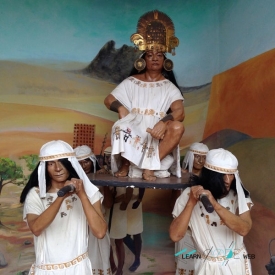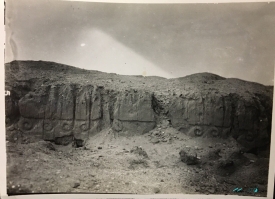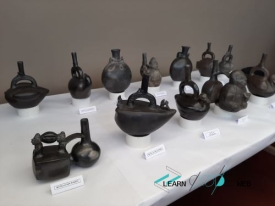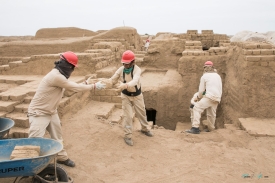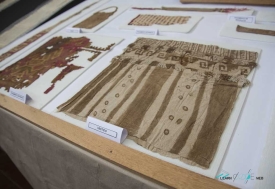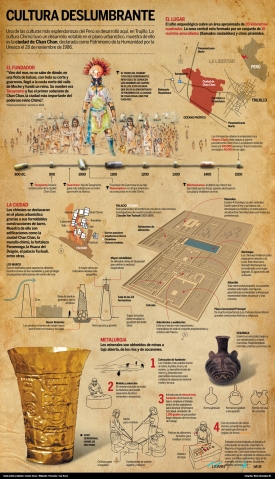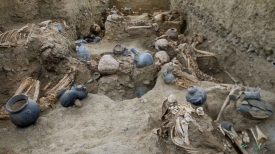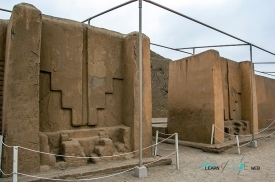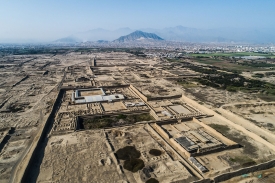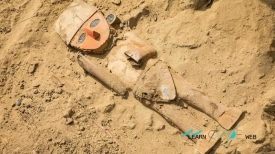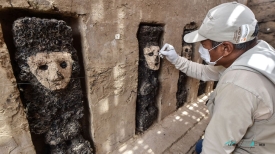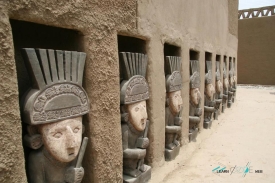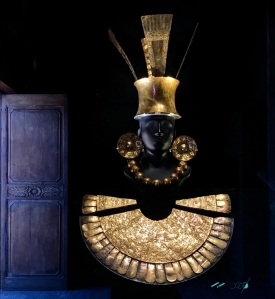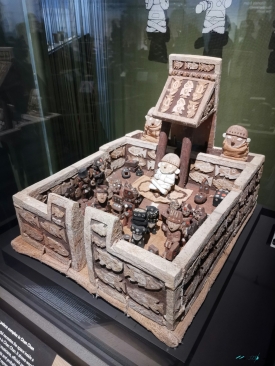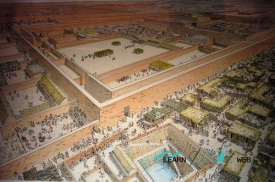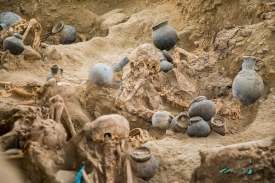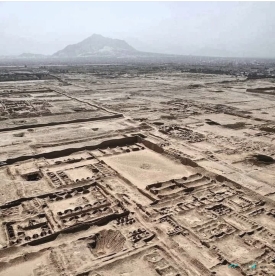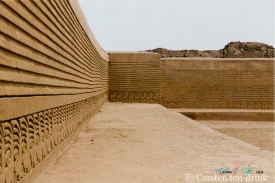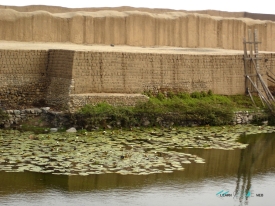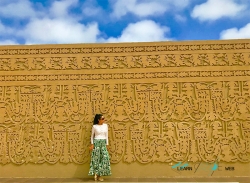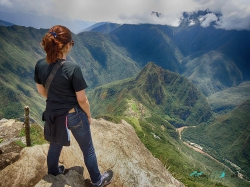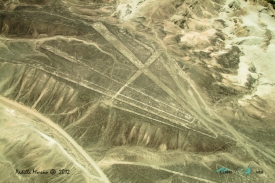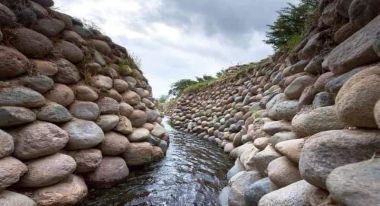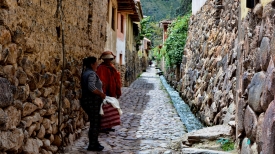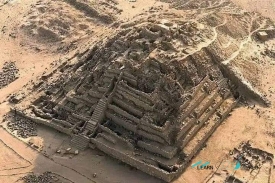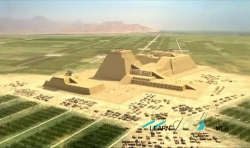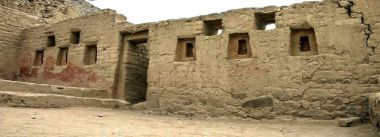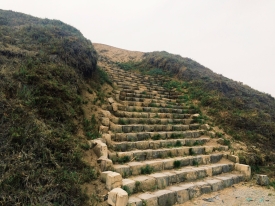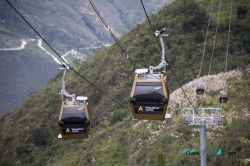ABOUT Chan Chan
Chan Chan, once the largest city in pre-Columbian America, was the capital of the Chimu Empire. This ancient city, located in the Moche Valley near the modern city of Trujillo in Peru, is an astonishing testament to the architectural and cultural prowess of its inhabitants. At its peak, Chan Chan is believed to have been home to over 40,000 people, and its impressive ruins continue to inspire awe in visitors today.
In 1535 Francisco Pizarro founded the Spanish city of Trujillo which pushed Chan Chan further into the shadows. While no longer a teeming capital city, Chan Chan was still well known for its great riches and was consequently looted by the Spaniards.
This great pre-Hispanic city is made up of a strictly urban nuclear zone of 6 square kilometers, where 10 walled complexes of great size, 35 semi-monumental ensembles or architectural units, 6 pyramids, 4 extensive neighborhoods popular and ceremonial roads that interconnected them. The other 8 square kilometers have been defined as the peripheral zone, of a rural character and where pyramids, temples and roads that connected the city with the rest of the territory, as well as the famous huachaques or agricultural units in wetlands.
At its peak, Chan Chan covered an area of approximately 20 square kilometers. The city's population, estimated to be around 40,000 people, was organized into a strict hierarchy, with the ruling elite residing in the citadels. The commoners, who were mainly farmers, fishers, and artisans, lived outside the citadel walls in simple adobe houses.
Between 2016 and 2022, an international project between the Consiglio Nazionale delle Ricerche (CNR) and the Consejo Nacional de Ciencia, Tecnología e Innovación Tecnológica (CONCYTEC) was conducted at the site. The work intended to build a 3D Heritage Building Information Model (HBIM) of the Huaca Arco Iris, the largest adobe monumental complex in South America. The huaca is placed chronologically alongside the first structures built at Chan Chan. The time frame of the site’s construction was towards the end of the Middle Horizon in the Central Andes. The primary function of the huaca is believed to have been a ceremonial funerary platform.
On 28 November 1986, UNESCO designated Chan Chan as a World Heritage Site, and placed it on the List of World Heritage in Danger.
Chan Chan offers a unique and captivating glimpse into the past, showcasing the architectural prowess and rich cultural history of the Chimu people. Its recent discoveries continue to excite archaeologists and historians, ensuring that the ancient city remains a must-visit destination for travelers to Peru.
To visit Chan Chan, travelers can fly into Trujillo's Capitán FAP Carlos Martínez de Pinillos International Airport. From there, it's a short 20-minute drive to the entrance of the archaeological site. Alternatively, visitors can take a bus or taxi from the city center.
History
The Chimu Empire, which ruled over a vast territory spanning from Ecuador to central Peru, thrived from around 900 to 1470 A.D. Chan Chan, its capital, was built around 850 A.D. and was inhabited until the Inca Empire conquered the Chimu around 1470 A.D. Eventually, the city was abandoned, and its mud-brick structures began to erode.In 1535 Francisco Pizarro founded the Spanish city of Trujillo which pushed Chan Chan further into the shadows. While no longer a teeming capital city, Chan Chan was still well known for its great riches and was consequently looted by the Spaniards.
Architecture of Chan Chan
The city's architecture is characterized by its adobe constructions, featuring intricately carved geometric and zoomorphic designs. The urban layout consists of ten walled citadels, known as "ciudadelas," which housed the elite class, temples, and ceremonial spaces. Each citadel had only one entrance, and they were organized around a central, open space.This great pre-Hispanic city is made up of a strictly urban nuclear zone of 6 square kilometers, where 10 walled complexes of great size, 35 semi-monumental ensembles or architectural units, 6 pyramids, 4 extensive neighborhoods popular and ceremonial roads that interconnected them. The other 8 square kilometers have been defined as the peripheral zone, of a rural character and where pyramids, temples and roads that connected the city with the rest of the territory, as well as the famous huachaques or agricultural units in wetlands.
New Discoveries in Chan Chan
Recent excavations at Chan Chan have led to the discovery of several new findings, such as well-preserved murals, ancient pottery, and even an underground burial chamber. These discoveries have shed new light on the Chimu culture and have generated significant interest among archaeologists and historians.At its peak, Chan Chan covered an area of approximately 20 square kilometers. The city's population, estimated to be around 40,000 people, was organized into a strict hierarchy, with the ruling elite residing in the citadels. The commoners, who were mainly farmers, fishers, and artisans, lived outside the citadel walls in simple adobe houses.
Between 2016 and 2022, an international project between the Consiglio Nazionale delle Ricerche (CNR) and the Consejo Nacional de Ciencia, Tecnología e Innovación Tecnológica (CONCYTEC) was conducted at the site. The work intended to build a 3D Heritage Building Information Model (HBIM) of the Huaca Arco Iris, the largest adobe monumental complex in South America. The huaca is placed chronologically alongside the first structures built at Chan Chan. The time frame of the site’s construction was towards the end of the Middle Horizon in the Central Andes. The primary function of the huaca is believed to have been a ceremonial funerary platform.
On 28 November 1986, UNESCO designated Chan Chan as a World Heritage Site, and placed it on the List of World Heritage in Danger.
Chan Chan offers a unique and captivating glimpse into the past, showcasing the architectural prowess and rich cultural history of the Chimu people. Its recent discoveries continue to excite archaeologists and historians, ensuring that the ancient city remains a must-visit destination for travelers to Peru.
To visit Chan Chan, travelers can fly into Trujillo's Capitán FAP Carlos Martínez de Pinillos International Airport. From there, it's a short 20-minute drive to the entrance of the archaeological site. Alternatively, visitors can take a bus or taxi from the city center.
The Best Pictures of Chan Chan
Videos of Chan Chan











